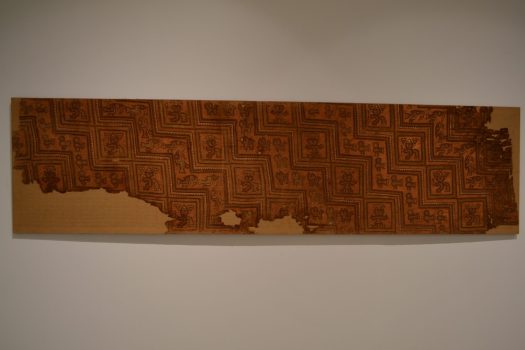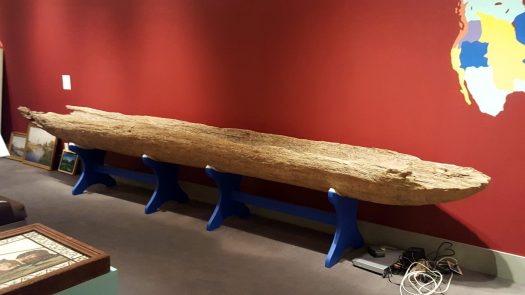Over time, all objects begin to deteriorate. Some objects break down more quickly than others. Archaeologists routinely find inorganic materials like stone, ceramics and metals. Organic things like wood, bone, animal skins, feathers, and textiles are the first to rot away, except under specific conditions. The survival of all artifacts depends largely on the climate and their surrounding conditions. Organic materials, like bone and textile, are most likely to survive in three kinds of conditions: cold, arid, or waterlogged.
DRY PRESERVATION (OR DESICCATION)
Cold and frozen environments effectively refrigerate materials. Frozen landscapes often have low humidity levels and preserve artifacts through a process of desiccation, or extreme drying. Hot and arid climates, like deserts, preserve artifacts in the same way. The absence of water in both of these environments means that harmful bacteria, that eat away at organic material, cannot survive. An excellent example of this type of preservation can be seen in one of the Museum’s Peruvian textiles.

EM Collection 89.1
The textile, pictured above, is attributed to the Chimú culture, a group of people who lived in the Andes Mountains and coastal valleys of Peru between the 12th and 15th century. The Chimú had a very advanced textile industry and produced elaborate textiles like this one. Archaeologists typically do not find textiles in the archaeological record because they are made of organic materials, like Alpaca fiber. However, textiles like this one have survived due to the unique customs of the Chimú and the environment in which they lived. This textile has been identified as a burial cloth that dates to 1100 A.D. Many Andean cultures would wrap the bodied of their dead in as many as 20 burial cloths, creating a bundle. These bundles would then be buried in the desert coastal areas of Peru. This dry environment ensured that the remains and other organic materials remained preserved.
WET PRESERVATION
Artifacts can also be preserved in waterlogged environments. While waterlogged environments are not absent of water, they are anaerobic, meaning they lack oxygen. Without oxygen, artifacts are protected from the same harmful bacteria. An excellent example of this type of preservation is the Museum’s Dugout Canoe.

EM Collection 65.12
Duguout canoes, like this one, were created by many Native American Indian groups throughout North America. This canoe is made of Eastern Hemlock, Pennsylvania’s state tree, and could have held 4-5 people. To create this canoe, a controlled fire was lit inside a felled log. Approximately 20 canoes like this one were found at the bottom of bodies of water in Pennsylvania. It was a practice among tribes to submerge canoes underwater for the winter months to avoid damage from ice. Luckily for us, this has helped to preserve these objects and the history of the people who created them.
OTHER FACTORS THAT IMPACT PRESERVATION
Random events like volcanic explosions can also preserve artifacts – volcanic ash has the ability to bury artifacts and keep them almost perfectly preserved. Another factor that affects the preservation of materials is how they are deposited. Some materials are left out in the open – these are affected by things like rainfall, sunlight and other natural phenomena. Artifacts that are buried stand a better chance at being preserved as they are not affected by the same threats of exposure. Inorganic materials, like ceramics and stone, can survive in a buried environment for thousands of years before being excavated.
SOURCES:
Chemello C., Davis S. (2014) Dry/Desert Conditions: Preservation and Conservation. In: Smith C. (eds) Encyclopedia of Global Archaeology. Springer, New York, NY
Campbell, P. B. (n.d.). Wetlands. Retrieved April 3, 2020, from http://www.maritimearchaeology.com/research/wetlands/
Rocheleau, C. (2014, February 26). Artefact Preservation. Retrieved from https://archaeologistsdiary.wordpress.com/what-is-archaeology/artefact-preservation/
Written by Francesca Saldan, Curator of Collections and Exhibitions.
